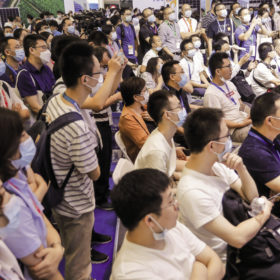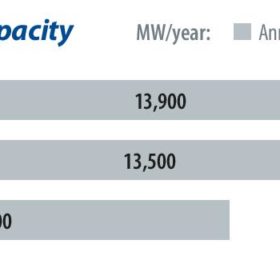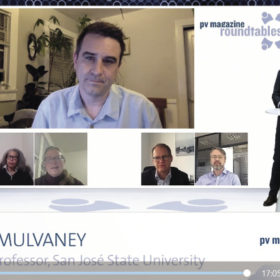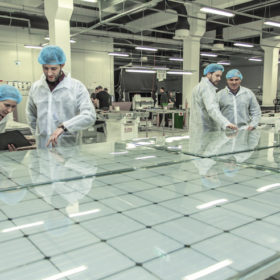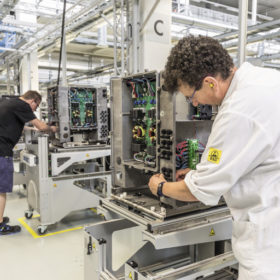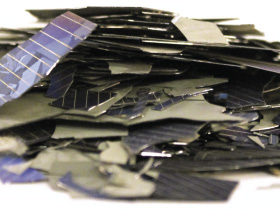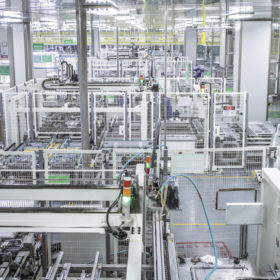Packing light
Tens of thousands of health facilities in low- and middle-income countries lack reliable electricity, contributing to high rates of maternal mortality. Health workers struggling in near darkness use candles, kerosene lanterns, or cellphones to provide illumination for critical procedures. They ask patients to pay for candles, batteries for flashlights, or kerosene for lanterns – a barrier to health care for women living in extreme poverty. We Care Solar designs and delivers pre-wired compact Solar Suitcases for maternal health care facilities in the developing world. This all-in-one solar+storage solution for childbirth evolved from a doctoral student’s research project, and is being scaled worldwide to ensure that no woman gives birth in the dark.
How can yield be increased, and by how much?
In preparation for the Asset Management Session of pv magazine’s Virtual Roundtables Europe in June, we took a close look at how much yield is lost due to quality issues, and discussed with a group of experts when it makes financial sense to take appropriate measures to address these issues.
A domestic affair
The annual SNEC trade show in Shanghai has long been an important date on the calendar for the global PV industry. But due to pandemic-related travel restrictions, the 2020 event was a decidedly Chinese affair, and international players were a rare sight in the exhibition halls. Vincent Shaw, pv magazine’s China correspondent, reports from what will likely be the only major PV trade show to take place this year.
Time is now for HJT
There’s nothing new under the sun, and this is ever so in PV. So it should come as no surprise that the hottest new cell technology has actually been in mass production for decades. But is now the time for heterojunction to move into the mainstream? There are serious challenges to overcome if so, but momentum is undoubtedly building.
Beyond carbon blinders, deployment fever
He wrote the first book on sustainability in solar and has a second on the way. Dustin Mulvaney, a professor at San José State University, has been investigating sustainability in the solar sector and the wider energy transition for well over a decade. And by applying a broad definition of sustainability – beyond the environment to include social justice goals – he believes that the solar industry can avoid reputational risks.
pv magazine test – July 2020 results
We are happy to present the next batch of energy yield results from the outdoor test field in Xi’an, China. In this issue, we present the July 2020 results with additional analysis from George Touloupas, director of technology and quality at CEA.
Materials in the circular economy
A number of companies are now racing to find new materials to replace toxic or otherwise unsafe elements in PV modules, in pursuit of circular economic ideals. In a similar vein, many researchers are also looking for ways to recycle and reuse some of these materials at the end of solar panel lifetimes. In line with these efforts, artificial intelligence and machine learning now play a critical role in identifying new chemical footprints for PV modules and cells.
New inverter design coming around
Circular economy approaches in the solar industry have hitherto largely pertained to modules and batteries. Inverters, meanwhile, haven’t been in focus as much. Although these devices stand for less than 20% of the overall footprint of PV, they also contain significant volumes of valuable or toxic raw materials. Designing such products with their lifespans in mind has therefore become a critical step for the solar industry.
Waste not, want not
In the fourth quarter, pv magazine’s UP initiative is turning its attention to the topic of PV module recycling. With huge projected volumes of waste edging ever nearer, the topic is gathering speed on a global level. But how can the tension between economic viability and equipment lifetimes of up to 30 years and beyond be addressed? And what is happening in the field of recycling technology? Will it ever be possible to extract the most valuable materials from today’s PV modules?
Reducing solar’s environmental impact through ecolabels
It is undeniable that easy access to energy has provided tremendous benefits to humankind over the last several decades. But that access has come at a price – one that society only discovered after the fact. From the thousand-year half-lives of spent nuclear fuel to the climate change impact of fossil fuels, access to energy has had a high environmental cost. Renewable energy, especially solar, seeks to provide that same access without the environmental cost. But what is the environmental impact of solar panels and inverters? Is society once again seeking to benefit from an energy source without understanding and addressing its environmental impact? Not this time, writes Green Electronics Council CEO Nancy Gillis.


